 W
WThe Archangelsk Gospel is a lectionary in Old Church Slavonic dated to 1092. It is the fourth oldest Eastern Slavic manuscript. The book is stored in the collection of the Russian State Library. UNESCO added the Arkhangelsk Gospel to the international register Memory of the World Programme in 1997.
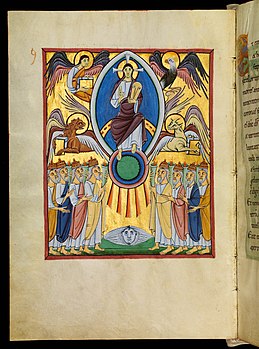 W
WThe Bamberg Apocalypse is an 11th-century richly illuminated manuscript containing the pictorial cycle of the Book of Revelation and a Gospel Lectionary of the books of pericopes. This medieval illuminated manuscript was created during the Ottonian dynasty; it is unknown whether it was commissioned by Otto III or Henry II. It was completed sometime between 1000 and 1020. There is proof that Henry II donated this illuminated manuscript in 1020 to Collegiate Abbey of St. Stephan, on the occasion of its inauguration. The Bamberg Apocalypse is now located in the Bamberg State Library.
 W
WThe Codex Aureus of Echternach is an illuminated Gospel Book, created in the approximate period 1030–1050, with a re-used front cover from around the 980s. It is now in the Germanisches Nationalmuseum in Nuremberg.
 W
WThe Vyšehrad Codex, also known as the Coronation Gospels of King Vratislaus, is a late 11th-century illuminated Romanesque Gospel Book, which is considered the most important and most valuable manuscript kept in Bohemia. Its extremely rich iconography and its visual components rank it among the most precious illuminated manuscripts of the second half of the 11th century in Europe. It was probably made at the order of Czech diplomats to honour an anniversary of the Czech King Vratislav's coronation which took place in 1085. The codex is of Danubian provenance, and closely related to three other surviving manuscripts – two of them now in Poland and one in the Prague Chapter Library. They probably originated in the circle of the scriptorium at the Monastery of St. Emmeram in Regensburg. The manuscript is now located in the Czech National Library, Prague under the signature XIV A 13. In 2005 it was declared as a National cultural monument of the Czech Republic.
 W
WThe Emperor's Bible, also known as Codex Caesareus, Codex Caesareus Upsaliensis or the Goslar Gospels, is an 11th-century illuminated manuscript currently in Uppsala University Library, Sweden. Despite its name, it is not a Bible but a Gospel Book. The book was made in the scriptorium of Echternach Abbey, and is one of four preserved large Gospel Books made there during the 11th century. It was commissioned by Emperor Henry III and donated by him to Goslar Cathedral, where it remained until the Thirty Years' War. It was then lost for about 100 years. Its previous richly decorated cover was also lost at this time at the latest. The book later appeared again in the possession of Swedish diplomat and civil servant Gustaf Celsing the Elder. At the death of his son, it was acquired by Uppsala University.
 W
WThe Enina Apostle or Enina Apostolos is an 11th-century Old Church Slavonic Cyrillic manuscript. Discovered in a poor condition in 1960 during restoration work in the central Bulgarian village of Enina, the partially preserved parchment manuscript is housed in the SS. Cyril and Methodius National Library in Sofia. It is the oldest Cyrillic manuscript currently held by any Bulgarian collection.
 W
WFragmenta Vindobonensia, also known as the Vienna folios, is the name of two illuminated Glagolitic folios that most likely originate from 11th- or 12th-century Croatia and Dalmatia. They were discovered and first described by Vatroslav Jagić in 1890 and are kept in the National Library in Vienna. Some research puts their origin in western Croatia.
 W
WThe Golden Gospels of Henry III, also Codex Aureus of Speyer or Speyer Gospels, is an eleventh-century illuminated Gospel Book. The manuscript contains the Vulgate versions of the four gospels plus prefatory matter including the Eusebian canon tables. It was probably produced at the Abbey of Echternach under the patronage of Henry III, Holy Roman Emperor. In 1046, Henry donated the manuscript to Speyer Cathedral to commemorate the dedication of the cathedral's high altar.
 W
WThe Gospels of Otto III is considered a superb example of Ottonian art because of the scope, planning, and execution of the work. The book has 276 parchment pages and has twelve canon tables, a double page portrait of Otto III, portraits of the four evangelists, and 29 full page miniatures illustrating scenes from the New Testament. The cover is the original, with a tenth-century carved Byzantine ivory inlay representing the Dormition of the Virgin. Produced at the monastery at Reichenau Abbey in about 1000 CE., the manuscript is an example of the highest quality work that was produced over 150 years at the monastery.
 W
WThe Harley Psalter is an illuminated manuscript of the second and third decades of the 11th century, with some later additions. It is a Latin psalter on vellum, measures 380 x 310 mm and was probably produced at Christ Church, Canterbury. The most likely patron of such a costly work would have been the Archbishop of Canterbury at the time, possibly Æthelnoth, who was consecrated in 1020 and remained at Canterbury until 1038.
 W
WThe Landévennec Group is a group of 10th and 11th century illuminated manuscripts of the Four Evangelists from Basse-Bretagne, probably all from the scriptorium of Landévennec Abbey. Influenced by insular art, they are marked by their representation of the evangelists as humans with animal heads.
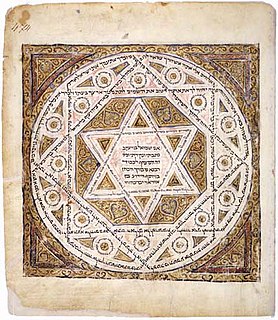 W
WThe Leningrad Codex is the oldest complete manuscript of the Hebrew Bible in Hebrew, using the Masoretic Text and Tiberian vocalization. It is dated 1008 CE according to its colophon. The Aleppo Codex, against which the Leningrad Codex was corrected, is several decades older, but parts of it have been missing since 1947, making the Leningrad Codex the oldest complete codex of the Tiberian mesorah that has survived intact to this day.
 W
WThe Leofric Missal is an illuminated manuscript, not strictly a conventional missal, from the 10th and 11th century, now in the Bodleian Library at Oxford University where it is catalogued as Bodley 579.
 W
WThe Liuthar Gospels are a work of Ottonian illumination which are counted among the masterpieces of the period known as the Ottonian Renaissance. The manuscript, named after a monk called Liuthar, was probably created around the year 1000 at the order of Otto III at the Abbey of Reichenau and lends its name to the Liuthar Group of Reichenau illuminated manuscripts. The backgrounds of all the images are illuminated in gold leaf, a seminal innovation in western illumination.
 W
WThe Menologion of Basil II is an illuminated manuscript designed as a church calendar or Eastern Orthodox Church service book (menologion) that was compiled c. 1000 AD, for the Byzantine Emperor Basil II. It contains a synaxarion, a short collection of saints' lives, compiled at Constantinople for liturgical use, and around 430 miniature paintings by eight different artists. It was unusual for a menologion from that era to be so richly painted. It currently resides in the Vatican Library . A full facsimile was produced in 1907.
 W
WMinuscule 113, ε 134 (Soden), is a Greek minuscule manuscript of the New Testament, on parchment leaves. Paleographically it has been assigned to the 11th-century.
 W
WThe Old English Hexateuch is the collaborative project of the late Anglo-Saxon period that translated the six books of the Hexateuch into Old English, presumably under the editorship of Ælfric of Eynsham. It is the first English vernacular translation of the first six books of the Old Testament, i.e. the five books of the Torah and Joshua. It was probably made for use by lay people.
 W
WThe Ostromir Gospels is the oldest dated East Slavic book.. The Ostromir Gospels was created by deacon Gregory for his patron, Posadnik Ostromir of Novgorod, in 1056 or 1057, probably as a gift for a monastery.
 W
WThe Pericopes of Henry II is a luxurious medieval illuminated manuscript made for Henry II, the last Ottonian Holy Roman Emperor, made c. 1002 – 1012 AD. The manuscript, which is lavishly illuminated, is a product of the Liuthar circle of illuminators, who were working in the Benedictine Abbey of Reichenau, which housed a scriptorium and artists' workshop that has a claim to having been the largest and artistically most influential in Europe during the late 10th and early 11th centuries. An unrivalled series of liturgical manuscripts was produced at Reichenau under the highest patronage of Ottonian society.
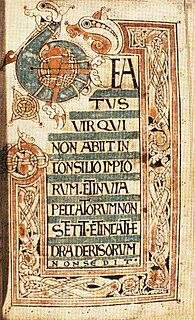 W
WThe Ricemarch Psalter is an 11th-century Welsh illuminated psalter, in a late Insular style, that has been described as "Hiberno-Danish", instead of the usual "Hiberno-Saxon", as it reflects Viking influence. Its 159 pages are vellum, and include the following sections: Letter of St. Jerome to Chromatius and Elidorus; Breviarius Apostolorum; Martyrologium Hieronymianum, and Various Tables. It is one of two surviving manuscripts from the scriptorium at Llanbadarn Fawr in Wales, established by the father of the scribe and the first owner. The other is a manuscript of St. Augustine's De Trinitate in Cambridge, by the same scribe. The psalter is now at Trinity College Dublin as MS 50.
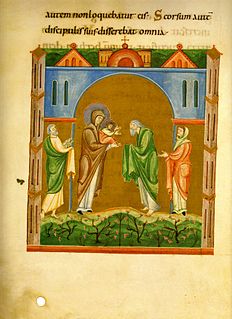 W
WThe Salzburg Pericopes is a medieval Ottonian illuminated gospel pericopes made c. 1020 at St. Peter's Monastery, Salzburg, during the reign of Henry II, the last Ottonian Holy Roman Emperor. It was made for Hartwig von Ortenburg, Archbishopric of Salzburg.
 W
WThe Seeon Evangeliary or Evangeliary of Henry II is an evangeliary created at Seeon Abbey between 1002 and 1014. Today it is kept in the Bamberg State Library under the record number Msc. Bibl. 95)
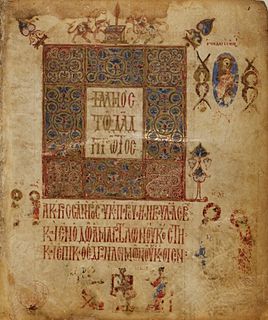 W
WThe Theodore Psalter is an illustrated manuscript and compilation of the Psalms and the canticles, or Odes from the Old Testament. "This Psalter has been held in the British Library since 1853 as Additional 19.352," wrote Princeton Art History professor Charles Barber in his first essay that is a companion to the Theodore Psalter E-Facsimile. Barber called the Psalter, "One of the richest illuminated manuscripts to survive from Byzantium."
 W
WThe Tiberius Psalter is one of at least four surviving Gallican psalters produced at New Minster, Winchester in the years around the Norman conquest of England. The manuscript can now be seen fully online at the British Library website.
 W
WThe Uta Codex Quattuor Evangelia is a "gospel lectionary" or evangeliary. It contains those portions of the gospels which are read during church services. "Unlike most Gospel lectionaries, the individual readings in the Uta Codex are not arranged in calendrical order, but are instead grouped together after their respective Gospel authors." It was commissioned around 1025 by Abbess Uta von Niedermünster, Regensburg, in Bavaria, Germany. It is a spectacular Ottonian manuscript, and is famous for its gem-encrusted gold case, with a relief of Christ in Majesty, as well as for the eight full-page miniatures. German art historian George Swarzenski described the Uta Codex as "the wonderful gospel book, which is perhaps the most significant work of Western illumination of its time." The manuscript consists of 119 parchment sheets, 382 × 274 mm. Four full-page frontispieces illustrate 1) the Hand of God, 2) Abbess Uta dedicating the codex to the Virgin and Child, 3) the Crucifixion, and 4) Saint Erhard, patron saint of the convent, celebrating Mass. A portrait of each the four Evangelists accompanies the readings from their Gospel.